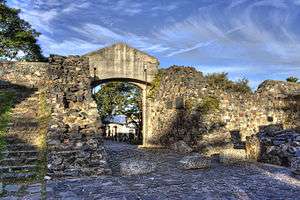Rio de la Plata
Rio de la Plata is a region in Uruguay and includes the departments of Montevideo, Canelones, Colonia, Rio Negro, San Jose and Soriano.

Cities
- 🌍 Montevideo – The capital city of Uruguay
- 🌍 Atlántida
- 🌍 Carmelo – A riverside town near Colonia, popular for its wineries and golf
- 🌍 Colonia (Colonia del Sacramento) – An old colonial city and a UNESCO World Heritage Site.
- 🌍 Colonia Valdense – A pastoral colonial town near Nueva Helvecia
- 🌍 Conchillas – A small town near Colonia, with English architecture left over from its original founders
- 🌍 Fray Bentos (Rio Negro) – A city which used to feature one of the world's most prominent meat factories, now a museum.
- 🌍 Mercedes (Soriano) – Pinacoteca Gimenez and Casa Puerta are art museums worth a visit in this colonial town
- 🌍 Nueva Helvecia – A pastoral town founded by Swiss and German settlers, with traces of Swiss culture still apparent to visitors. Uruguayans call it interestingly well organised
- 🌍 Nueva Palmira
- 🌍 Rosario – A small town featuring many outdoor murals
- 🌍 San José de Mayo
- 🌍 Villa Soriano – A 18th century colonial architecture and the first European settlement in Uruguay with a famous cemetery
Other destinations
- 🌍 Estero de Farrapos - a national park and a protected Ramasar wetland of international significance. It is considered the best spot in Uruguay to observe wild animals. Gateway to the park is the town of Nuevo Berlín.
Understand
Get in
By plane
The only major airport in the region in Carrasco International Airport (MVD IATA) just east of Montevideo. Alternatively, you can also consider flying into nearby Buenos Aires and taking a ferry from there.
By bus
Buses are available from other parts of Uruguay; Montevideo is the biggest hub by far. International buses, usually running only once or twice a week, serve Montevideo from cities including Asunción, Buenos Aires, Camboriu, Curitiba, Florianópolis, and Porto Alegre.
By car
It's easy to drive from other parts of Uruguay or from Argentina (crossing the bridge between Gualeguaychú and Fray Bentos). If you're coming from Buenos Aires, some of the ferries will carry cars.
By boat
Ferries are available from Buenos Aires to Colonia and Montevideo, and from Tigre to Carmelo. Connecting buses are available in all of these cities, and you can sometimes choose to include a connecting bus in your ferry ticket.
Get around
By bus
Bus service is pretty extensive in the region. Montevideo is the most important hub by far, and Colonia is also a something of a hub.
By car
See
This region is home to both of Uruguay's UNESCO World Heritage sites: the old city in Colonia and the meat-packing complex in Fray Bentos. Montevideo's old city is also famous. Beyond that, there are lovely little towns scattered through the region's farmland, as well as beaches on the shores of the enormous river.
Eat
Parts of the region are known for dairy production—try the cheese in Colonia del Sacramento and Nueva Helvecia!
Stay safe
Certain neighborhoods in Montevideo and some of its suburbs are best avoided, but other than that, the region is safe.
Go next
- Buenos Aires Province, right across the river in Argentina
- The beaches of Uruguay's Atlantic Coast, where the water is blue!
- Haven't see enough cows yet? Head to the largely agricultural Central and Northern Interior of Uruguay and you're sure to see plenty more...